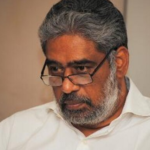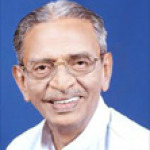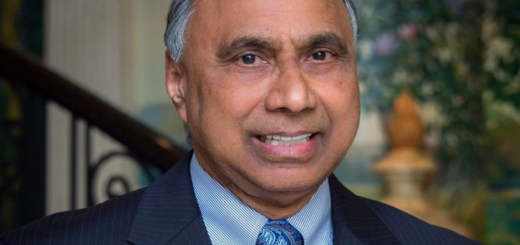One or two presidents at a time? Rebuilding foreign Policy Consensus

 By C. Raja Mohan, in Indian Express, January 3, 2017
By C. Raja Mohan, in Indian Express, January 3, 2017
Amidst this unusual jockeying, the White House reminded Donald Trump a few days ago that there is only one president at a time.
Last week, President Obama expelled 35 Russian diplomats from the United States by citing the US intelligence assessment that Russia had used cyber attacks to intervene in the elections last November.
(Note: In politics there are no permanent enemies, only interests. Theses interests and policies are bound to change with the change of governments. But they don’t usually show up sharp and strong instantly as a matter of courtesy and politeness to the out going government, much less before the new government is sown in. All of us have noticed it, but the Indian Express has pointed out very clearly for the US administration to take note.
Already the American Electoral College system is roundly criticized even by New York Times. Another point for it for criticisms would be the delayed crowning of the New President, nearly two months after the victory is announced, which is causing the present public ugly spectacle of a divided house and slugfest even on foreign policy matters. Since the dramatis personae are Trump and Obama we may have many more entertaining public spats at each other even on domestic policies, starting with affordable medical care. The worst causality externally could be the United Nations. It would be any one’s guess what Modi’s contribution would be as he a constant hopper to intercontinental countries and to white house.
 Whether in US or in India, it is always better that transition from one government to another is made smooth, following the diplomatically accepted expressions of finesse and niceties which even one’s virulent critics in Government deserve. james kottoor, editor)
Whether in US or in India, it is always better that transition from one government to another is made smooth, following the diplomatically accepted expressions of finesse and niceties which even one’s virulent critics in Government deserve. james kottoor, editor)
Watching Barack Obama and Donald Trump battle it out on Russia and Israel over the year end, one is reminded of the increasingly contentious Indian discourse on external relations. America, with its huge margins for error, can afford such blood letting. Delhi, however, does not have the luxury of domestic discord undermining its diplomacy.
Last week, President Obama expelled 35 Russian diplomats from the United States by citing the US intelligence assessment that Russia had used cyber attacks to intervene in the elections last November. Trump has dismissed these allegations and the claims that the Russian President Vladimir Putin had steered the outcome in favour of Republicans.
When Putin refused to retaliate with tit-for-tat expulsion, Trump was all praise for him. He tweeted: “Great move on delay (by V. Putin) — I always knew he was very smart”. It is not often one sees an incoming president argue with the outgoing one, especially on foreign policy.
The slugfest on Israel was equally fascinating. In December, Obama allowed the United Nations Security Council pass a resolution condemning Israel for building settlements. Trump wanted Obama to veto rather than abstain. Even more significantly, Trump got involved in direct diplomacy in the Middle East. He spoke to the Egyptian President Abdel Fattah al-Sisi to get Cairo to delay action on the resolution. But the resolution, moved by other countries, came up for a quick vote. Israel has accused the Obama administration of complicity.
Amidst this unusual jockeying, the White House reminded Donald Trump a few days ago that there is only one president at a time. Unlike in other democracies, there is a big gap between the election of the new leader (in early November) and his installation on January 20th. Before 1937, the inauguration used to take place in early March, four months after the election. Over the last two centuries and more, the American political establishment has worked out an unwritten code that limits the conflict between the outgoing and incoming presidents. That code has broken down this time despite the agreement between Obama and Trump immediately after the elections to organise a friction free transition.
The White House and the Democrats argue that Trump has departed from traditions. Trump and his Republican supporters are angry that Obama is tying down the incoming president’s hands by taking decisions that will limit his options. The unseemly argument between the two sides reflects the deepening political divide in America today. Contrary to the conventional wisdom, the aftermath of the election has not seen either the Democrats or the Republicans move towards finessing differences. The liberals are convinced that Trump will put America in harm’s way and must be constrained. The president-elect’s supporters believe that Democrats are not willing to accept the November verdict.
Even those observers, who understand the consequences of a bitter election, are surprised by the intensity of contention on foreign policy. It is never easy to engineer big foreign policy changes in democracies, where a large number of players are involved is decision making. This is particularly true of the United States where power is divided and the checks and balances are institutionalised.
On the face of it, domestic consensus on foreign policy is a good thing, for it prevents wild oscillations in the conduct of external relations. It ensures the change is incremental and is well considered. But less acknowledged is the fact that consensus can often be debilitating. Group think prevents the foreign policy establishments from making necessary changes to a nation’s policies in time.
Whether one agrees with Trump or not, there is no denying his determination to challenge the mainstream American views on foreign policy. As a consequence, US relations with Russia and China could see much change in the coming months. His approach to different regions — Europe, the Middle East, and the Indo-Pacific — might see many twists and turns. Trump’s approach to multilateralism will be very different from that of Obama — the president-elect has dismissed United Nations as a “talking shop”.
These changes in America’s engagement with the world demand flexibility on the part of other nations — large and small. While Prime Minister Narendra Modi has already brought much dynamism to India’s own diplomacy, it has generated considerable unease within the so-called strategic community and much criticism from the Congress party.
After 1991, prime ministers P.V. Narasimha Rao and Atal Bihari Vajpayee strove to build a consensus around India’s adjustment to the post Cold War world. That consensus broke down since the mid 2000s, as the BJP and Congress have attacked each other on foreign policy.
As India navigates the post-Trump turbulence in the world, Delhi needs to restore a measure of understanding on foreign affairs between the BJP and the Congress. Sceptics will point to the difficulty of constructing such a consensus amidst the current polarisation; others will question its necessity. Realists, however, know that constructing a common ground at home will make it a lot easier to cope with the multiple surprises that might be in store for India in 2017.
(The writer is director, Carnegie India, Delhi and consulting editor on foreign affairs for ‘The Indian Express’)
















